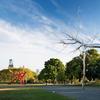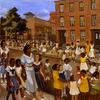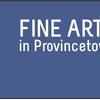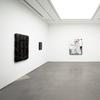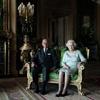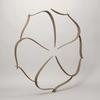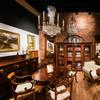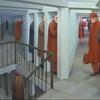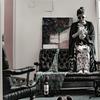Ben Patterson, Cornerstone of Fluxus and Experimental Art, Dies in Wiesbaden
- WIESBADEN, Germany
- /
- June 28, 2016
Ben Patterson died Saturday at the age of 82 in his house in Wiesbaden. By losing Ben Patterson, the Hessian capital loses its international "Fluxus ambassador", who was last exhibited in 2012 with a retrospective at Nassauischer Kunstverein Wiesbaden celebrating 50 Years of Fluxus. Parts of this show were previously seen in the Contemporary Arts Museum in Houston.
In the same year, he set up the only European access to his Museum for the Subconscious in the entrance area of the Kunstverein. The museum is open 7 days a week and 24 hours and provides free admission for each donated subconscious after the demise through the entrance, a bronze engraved gully top in the city of water, and into the flow of the Salzbach channel below the Wilhelmstrasse.
“Negative people may think: “Down the drain and be gone…!” But, I think: “Into the Rhine and into the world.” Ben Patterson explained at the opening, who had found his second home in Wiesbaden. His worldwide recognized artistic work was currently marked by an invitation to the next documenta in Kassel 2017.
Benjamin Anthony Patterson, born on May 29, 1934 in Pittsburgh, from childhood he showed an insatiable eagerness to learn. As a teenager he loved classical music (opera), literature, and science; furthermore, he was an excellent athlete and active Boy Scout. From 1952 to 1960, he studied music at the University of Michigan with the composer Gordon Mumma, with concentrations in composition, conducting and double bass. Throughout his training, Ben Patterson struggled to be the first black man to break through the "skin color barrier" into an American symphony orchestra, because at the time, the color of his skin made playing in one of these orchestras impossible. This eventually caused Patterson to emigrate to Canada, where he played bass in the Symphony Orchestra of Halifax. During his service in the US Army, he became a bassist in the Seventh Army Symphony Orchestra in Stuttgart From here he toured throughout Europe performing in 250 concerts over the course of 20 months, and later called this period of life the beginning of his career as a "Travel Junkie". After his service he become a bassist and assistant conductor in the Ottawa Philharmonic Orchestra. During his tour of Europe, Ben Patterson came in contact with electronic music and began to show great interest in experimental forms of music. He came to Cologne in June of 1960 and sought to study with Karl Heinz Stockhausen. Ben Patterson later described his encounter with the composer as a "disaster", which, however, would hold trendsetting consequences for his artistic development: The result is the famous performance Paper Piece, which for the first time since the Cabaret Voltaire in 1916, questioned the separation audience and performer.
"I expect from an experiencer (not a passive viewer or listener) as performer, interpreter and also as creator, to take part in the event. "It was never bothered with just stimulating the retina or the eardrum, but to do something that is aimed at the integration of experience and relevant skills."
During his stay in Cologne, he met the artists Nam June Paik and John Cage. Cage spontaneously invited Ben Patterson to participate in the Contre Festival in the studio of Mary Bauermeister, who would later become the companion of Karl Heinz Stockhausen. Ben Patterson continued to explore new ways of making music along with Emmett Williams, Daniel Spoerri, Nam June Paik, John Cage, and other avantgarde artists of the time. In the Spring of 1962, Nam June Paik recommended Ben Patterson and George Maciunas for an appearance in Wuppertal. Ein kleines Sommerfest – Après John Cage held in the Galerie Parnass - revealed the visual and performance talents of the young, highly gifted bassist. This appearance in Wuppertal has been cited as the first Fluxus performance in Europe in all of art history, and entailed that in 1962, Ben Patterson and George Maciunas would go on to initiate the International Festspiele Neuester Musik at the Wiesbaden Municipal Museum, the first Fluxus Festival ever held.
The first journalistic mention of Fluxus appeared in the military journal Stars and Stripes, which published an interview with Ben Patterson by Emmett Williams on August 30, 1962. A short TV clip of the Hessian Broadcast Service on his Performance Variations For Double Bass, a doublis considered today as an important historical document. Patterson’s planned seven-day stay in Europe turned out to become 18 months, in this time Ben Patterson turns from his compositional alignment to serial music to chance-based compositions. During this time, he produced the score Ants in Dusseldorf and published his first book in 1962, entitled Methods and Processes, which became the first artist book of its kind in history.
In Paris, Patterson worked in close cooperation with Robert Filliou and performed at some of the most diverse Fluxus concerts and festivals in Europe. He also maintained close connections with other artists of the post-war avant-garde.
As 1962 drew to a close, Ben Patterson returned to the US. The gaining strength of the Civil Rights Movement led by Martin Luther King - whose epochal speech „I Have a Dream“ Ben Patterson heard live on site and ultimately the starting of his family motivated him to pursue, as he put it himself, an „ordinary life“. Ben Patterson is survived by three children and two grandchildren.
During this period he created a few new Puzzle Poems and several artist books. He produced Mail Art using collaged print publications, which reflects both the politics of the time and the pulse of the art scene in New York in the sixties. The works he created from repurposed, discarded things such as debris, obsolete household items, and trash are never trivial, but always enigmatic and full of deep meaning. These works used humor and irony to challenge the hierarchy of the art world, which previously had not seen the use of everyday materials in such a consistent form. A significant amount of works of visual art are produced by an artist who was a trained musician.
In 1963, Patterson became a reference librarian for music in the New York Public Library and evolved from "Travel Junkie" to "Information Junkie". In 1965, he began studying Library Science at Columbia University NY and graduated in 1967 with a Master’s Degree. He was then appointed as general manager of the Symphony of the New World, an ensemble that focuses on the promotion of ethnic and gender diversity in orchestras.
From 1972-74, he became the Assistant Director of the New York Departement of Cultural Affairs and was appointed as an honorary professor and dean of the Department of Performance Art at the Staten Island Community College of the University of New York. He was director of the Pro Music Foundation, President of the Society of Black Composers, and even founded his own record label. During this time in New York at his self-proclaimed "artist-retirement", Ben Patterson was exceptionally engaged in the creation of a new cultural infrastructure that allowed African Americans and „Artists of Color“ new ways to realize their creative potential. Worldwide his works were performed countless times in his absence.
Even though he announced his step back from the Art World he participated in the Sao Paolo Biennale 1983 and had his first Solo Show in 1988 at the Emily Harvey Gallery in New York, titled Notes on an Ordinary Life. With this show he not only stepped back onto the Art Stage and set his focus, just in the sense of Fluxus, onto everyday living, but also moved the same year back to Wiesbaden, the very source of his artistic career, where 26 years before Fluxus had its revolutionary beginning. In Wiesbaden, the collectors Ute and Michael Berger and later the Nassauische Kunstverein where among the closest companions of the Fluxus movement and of Ben Patterson. Friends, allies and curious people were always welcome in his shop window living place and studio. Patterson found materials and ideas for his colorful works both around the world and especially in his immediate neighborhood, which he affectionately called "Art Supply Shop Wellritzstraße".
In his adopted home of Wiesbaden, the restless artist found the quietness for concentration and the artistic freedom, both the source of his artistic playful and at the same time highly concentrated work. With a cheeky smile on his face Ben Patterson fell peacefully asleep in Wiesbaden on June 25th June 2016 from here he will start his further travels.
At the Nassauische Kunstverein Wiesbaden there will be a book of condolence in his famous environment Ben’s Bar, thereby giving the friends of Ben Patterson the opportunity to say Goodbye. Starting from today one of his last wishes a Lottery for an Edition will take place. The financial outcome will be used for his Book Project A Family Album. 25 year of Fluxus portraits and performances photographed by Wolfgang Traeger. The draw of the three winners in combination with a farewell party will take place on Friday, September 2nd at 2:30 p.m., the 54th anniversary of the Opening of the Internationale Festspiele Neuester Musik in Wiesbaden.
Further information regarding the event will be available shortly on www.kunstverein-wiesbaden.de
For purchasing Lottery Tickets please check the following Doodle Link http://doodle.com/poll/ve9dd54nrvywb53n


